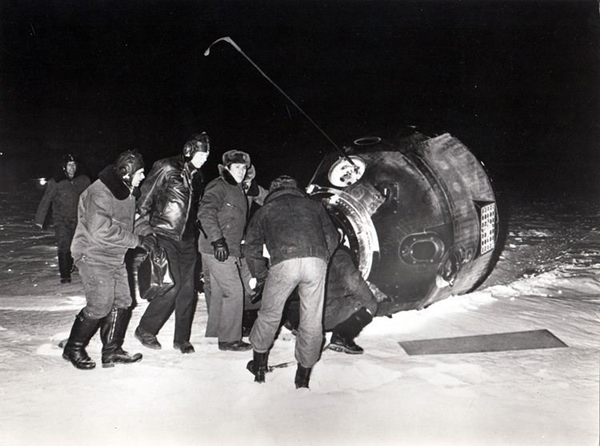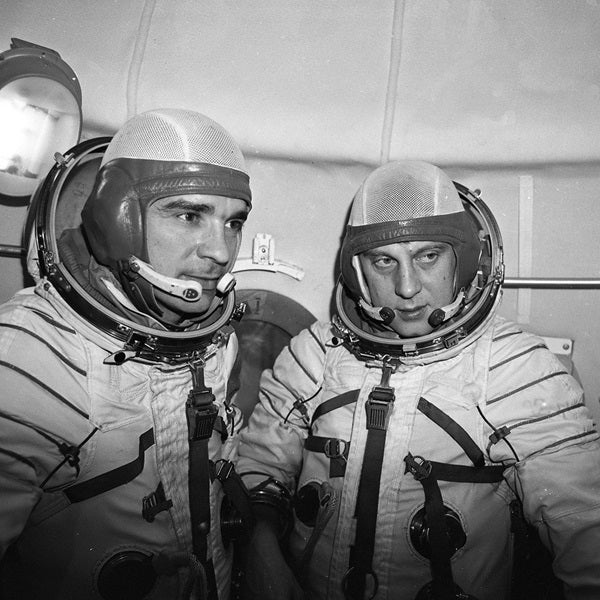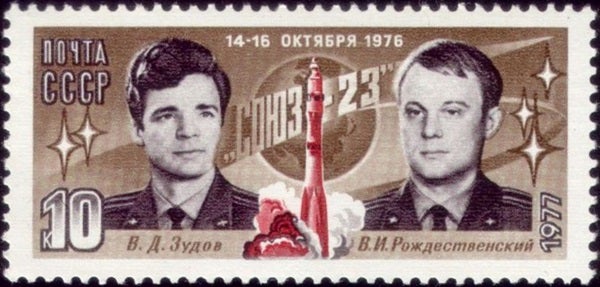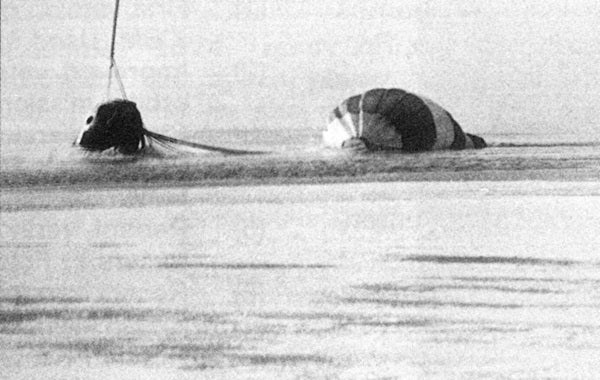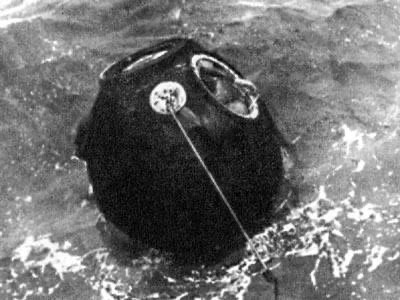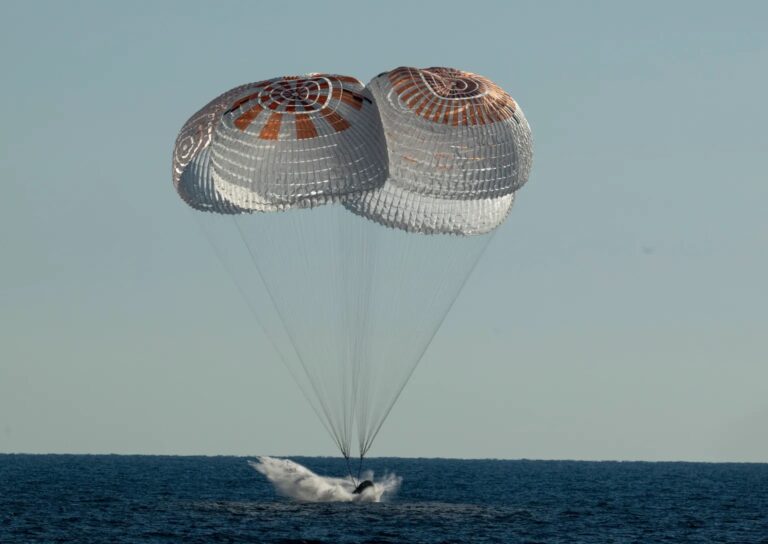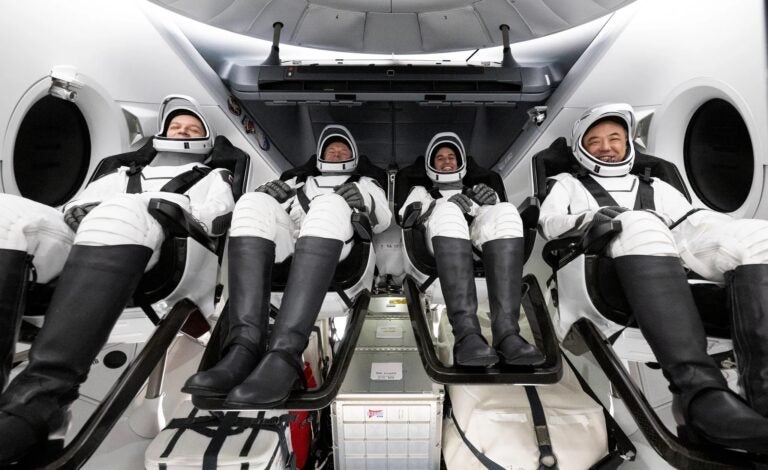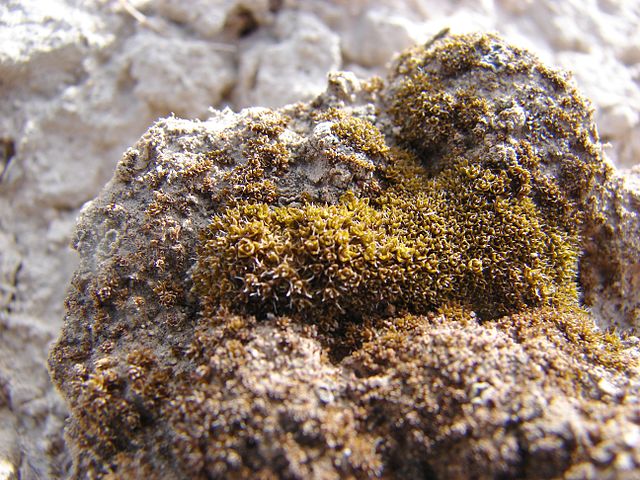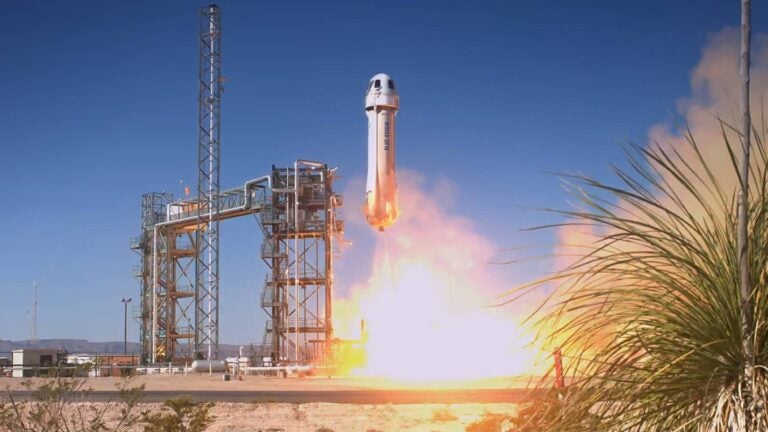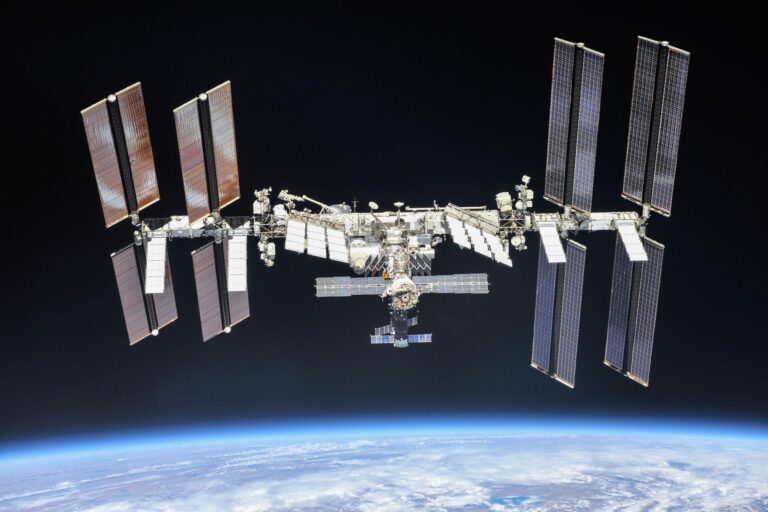Soyuz 23 was commanded by Vyacheslav Zudov, with Valery Rozhdestvensky serving as flight engineer. The mission was intended to be straightforward. The pair were to launch from the Cosmodrome at Baikonour, Kazakhstan, dock with the Salyut 5 space station, and stay there for one to three months. Salyut 5 was the latest in a series of highly successful orbiting Soviet space stations that fulfilled both civilian and military purposes (although Salyut 5’s mission was almost purely military in nature). It was the first spaceflight for both men.
The prior mission to Salyut 5 (Soyuz 21) ended abruptly when cosmonauts Boris Volynov and Vitaly Zolobov were forced to rapidly abandon the station. They had smelled acrid fumes and feared the atmosphere had become poisoned. (The air, which was contaminated with nitric acid, would eventually be vented before the next crew arrived.)
But when Zudov and Rozhdestvensky blasted off for Soyuz 23 on October 14, 1976, it marked what was essentially the last part of their mission that went according to plan.
An unpleasant (and unintended) splashdown
As Soyuz 23 approached Salyut 5, the automated docking system failed. Soviet dockings between spacecraft and stations were largely automated, and most cosmonaut crews of that era were not trained to manually approach and dock. And while attempting to get in position, the cosmonauts used a significant amount of their attitude control propellant, further worrying ground crews. The docking attempt was effectively scrubbed by ground control, and the two men began to make plans to return to Earth.
Zudov and Rozhdestvensky waited a day in orbit before commencing their deorbit burn when the landing window opened. But as the men descended, they were unaware they were heading straight into a blizzard with extremely high winds. After their parachute deployed, the men expected to make a landing on terra firma — as had all Soviet craft before them. But rather than with a thud, they landed with a splash. Soyuz 23 has fallen right into the middle of the then-partially-frozen Lake Tengiz in northern Kazakhstan, a body of water that covers more than 500 square miles (1,300 square kilometers).
By the time they changed, darkness had arrived outside. The men bobbed in the cold descent module, surrounded on every side by miles of freezing water and unforgiving weather. Complicating matters further, their reserve parachute later deployed as a result of a mechanical failure, threatening to completely submerge the capsule. Due to the limits of the oxygen system aboard the Soyuz, the men only had a few hours of breathable air remaining. Remembering their survival training, they limited their conversations to reduce oxygen consumption, at a bit of food to keep their energy up, and waited. They also made sure to turn down the heaters to prolong the descent module’s remaining battery life.
Help is on the way!
Meanwhile, Soviet recovery forces risked their own lives by flying straight into the storm to try and locate the craft. One helicopter managed to spot the cosmonauts’ capsule in the water. But the wild weather prevented them from holding their position long enough to lower rescuers and attach a recovery line to the spacecraft. Attempts to reach the cosmonauts by boat also failed. After exhausting their resources with little progress to show, the rescue was put on hold until the next day. Some assumed the men were either dead or would die before morning, given the extreme cold and limited oxygen supplies. And as their exhaled carbon dioxide continued to build up in the cabin, Zudov and Rozhdestvensky sounded increasingly strained and confused in communications as they continued to approach the point of blacking out.
With the severe weather waning, just before dawn the next day, a team of rescuers finally reached the capsule by boat. A short time later, a helicopter arrived on the scene and secured a line directly to the descent module. The rescuers agreed that the quickest course of action was to simply tug the descent module to shore. But such a procedure had never been practiced, let alone tested, before.
Despite the dangers, they decided it was their best option. The process, which took almost an hour, was extremely hard on the cosmonauts within the descent module, which occasionally would be forced completely underwater while it was pulled along. Still, it worked. Half a day after splashdown, the men finally emerged from a spacecraft coated in ice — both inside and out — and stepped foot back on solid ground.
Zudov and Rozhdestvensky officially received public honors for their perilous mission. But behind closed doors, they were largely blamed for the failed docking with Salyut 5. Neither man would ever fly to space again. Rozhdestvensky died in 2011 at the age of 72, while Zudov (now 79) is still alive to this day.
Soyuz 23, like Apollo 13, could be called a “successful failure” because the planned mission was never accomplished, yet the men all lived to tell the tale. And Soyuz 23, in particular, serves as a warning to astronauts of all nations: Survival training, while unlikely to be utilized, may one day save your life.
Doug Adler is a frequent contributor to Astronomy and the co-host of The Right Stuff Companion podcast.

